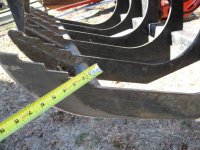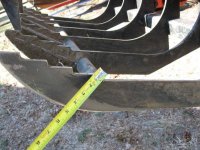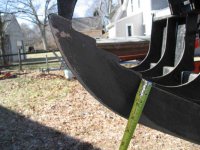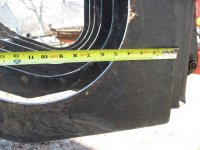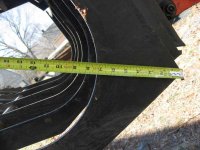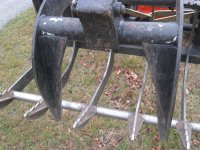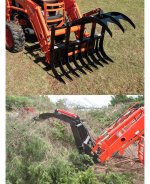IslandTractor
Super Star Member
- Joined
- Sep 15, 2005
- Messages
- 16,647
- Location
- Prudence Island, RI
- Tractor
- 2007 Kioti DK40se HST, Woods BH
1/2 may be overkill but 3 might be a bit small. I will need to measure but I think mine is 3/8 x 4. Some guys like half inch on the sides but I would put extra steel into an extra bottom tine or gussets for support .
My grapple has curved bottom tines which would be easy with CAD and CNC. I don't understand why more grapples don't use them as I see no advantage to straight except ease of building. That should not be such an issue with computers doing the cutting.
I was wrong about the 3/8 x 4. As the photos below show, 3/8 by 3 is more like it for the middle with even more than 4 inchs in the tips and especially the elbow. However, the bottom tines on my grapple are clearly CAD/CNC fabricated rather than using straight bottom tines like Markham/Gator and WRLong. The "elbow" of the outside tines and the two middle tines are more like 7 inches or so. I presume these variable dimensions were worked out in some engineering program.
After five years of heavy use grubbing stumps and small trees where I often lift the rear of the tractor or ride up trees, the bottom tines have held up without any issue. Rocks and asymmetric loads are the things that cause problems but those tend to cause trouble for the upper arm not the bottom tines.
